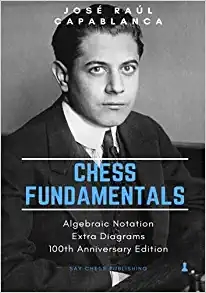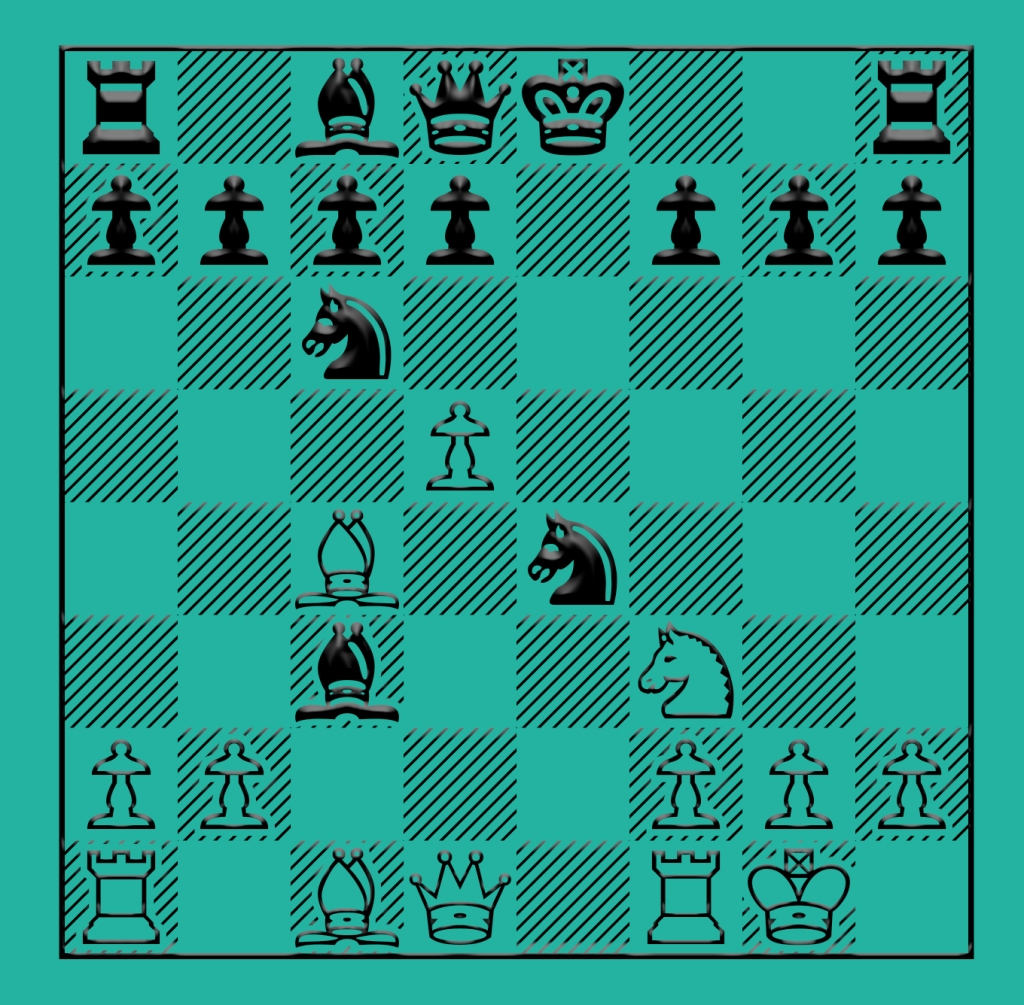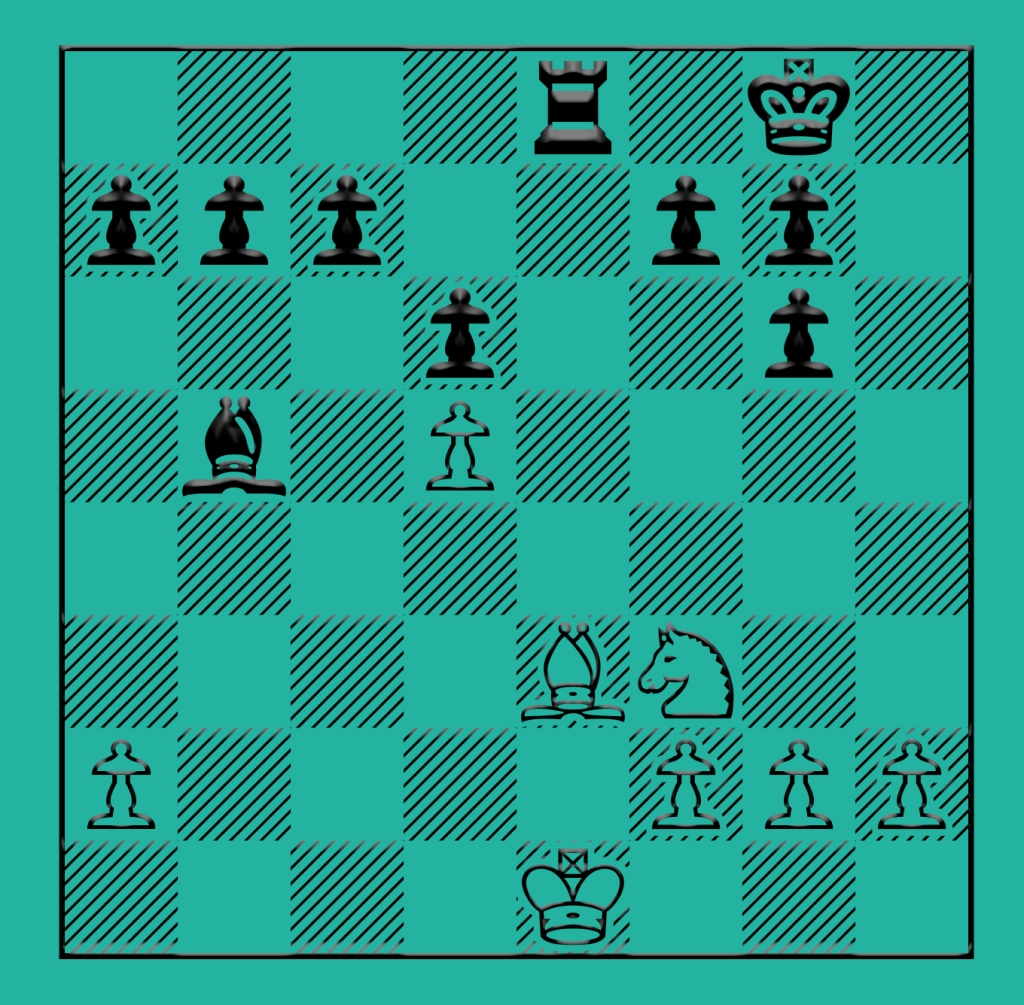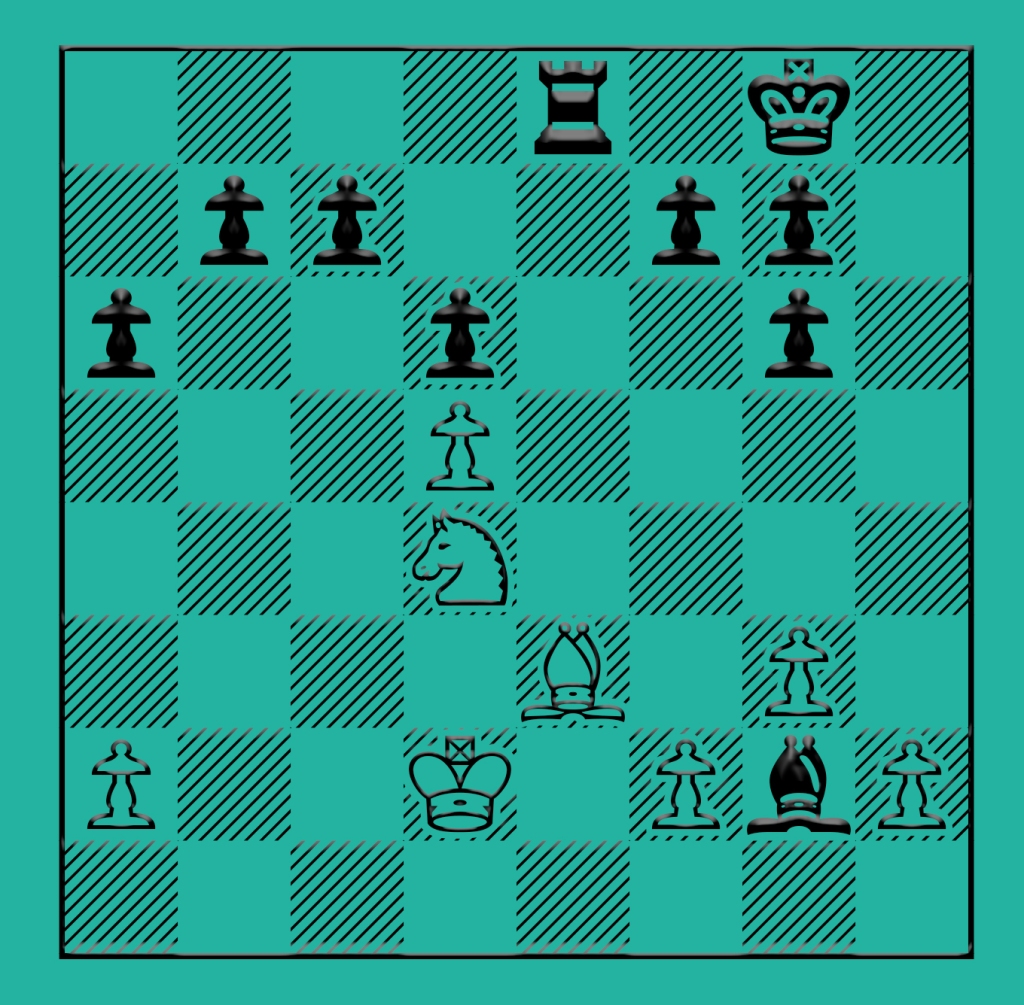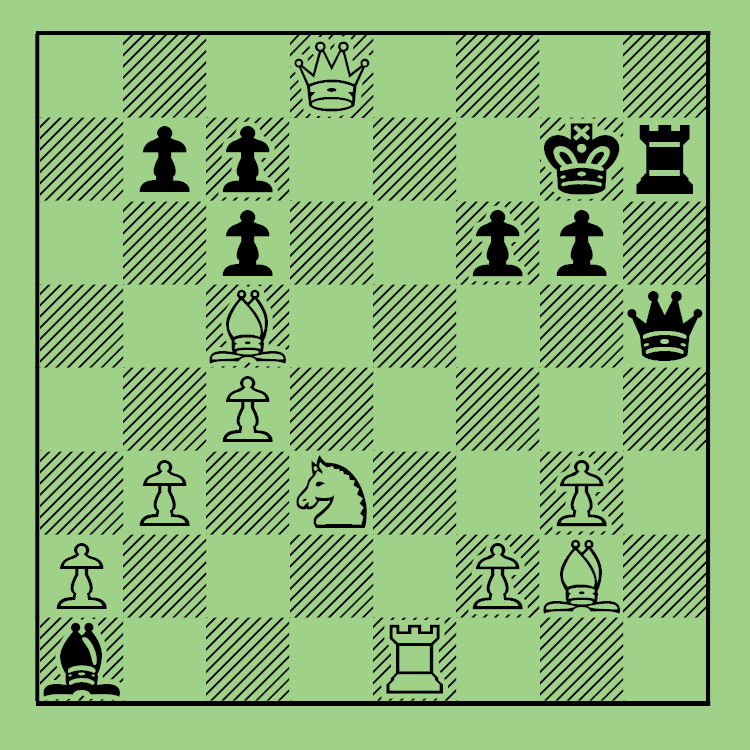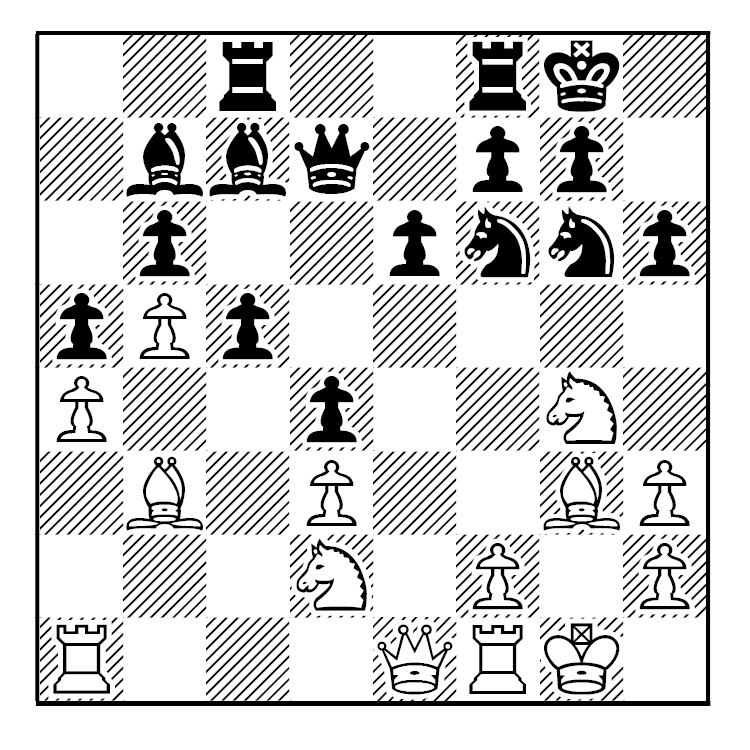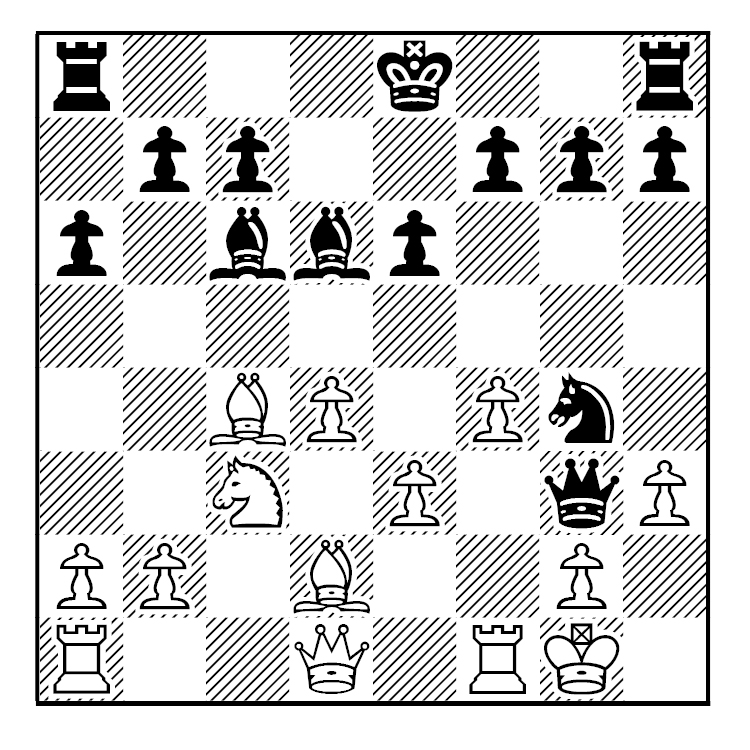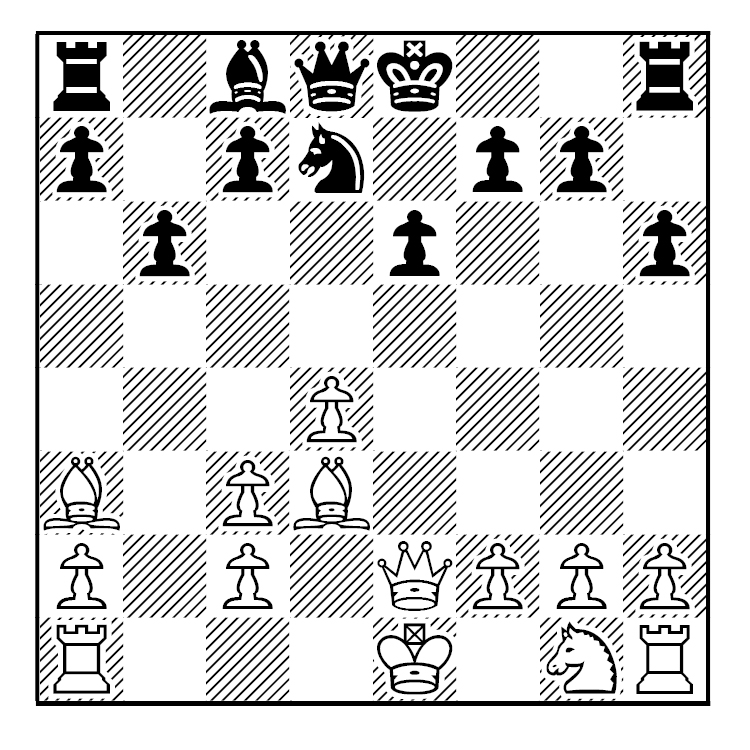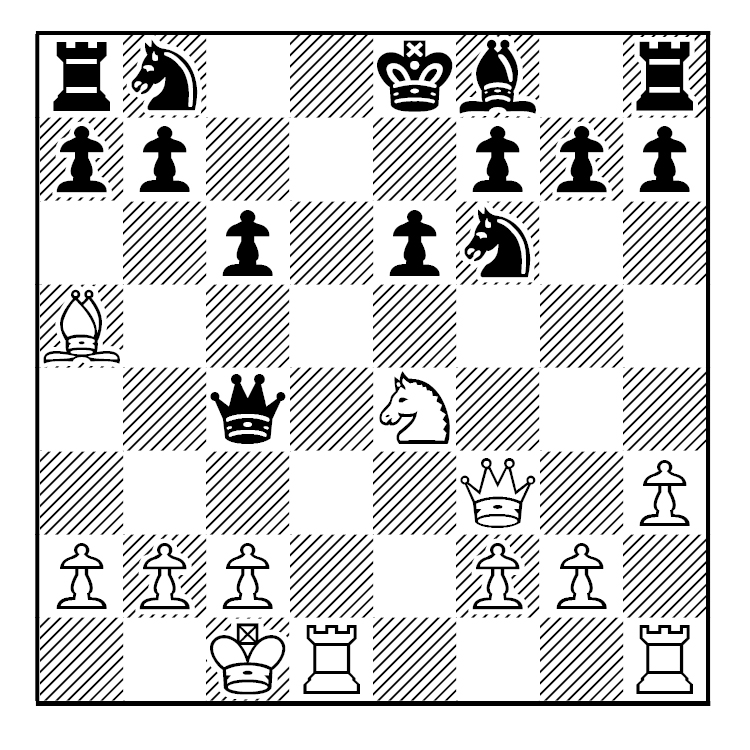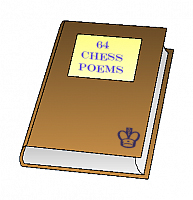
Many poems and the like have been written about chess. They range from the simple to the epic, from the silly to the serious, and can include the profound and philosophical.
We’ll start with the simple, and sometimes, silly limerick.
~~~~~~~~~~~~~~~~~~~~~~~~~~~~~~~~~~~~~~~~~~~
The first two are from NM Bill Wall.
(1)
There once was a player from Maine,
Who played chess on a fast train.
He took a move back
And was thrown off the track,
And he never played chess again.
(2)
Postal chess is still played today
And no reason why I shouldn’t play.
It is nice and slow,
And I can use my ECO,
It’s the postage I can’t afford to pay.
With the Internet now, you don’t have to pay postage.
~~~~~~~~~~~~~~~~~~~~~~~~~~~~~~~~~~~~~~~~~~~
Here’s an old classic, first appearing in Chess Potpourri by Alfred C. Klahre (Middletown, 1931). It’s titled, “The Solver’s Plight”
There was a man from Vancouver
Who tried to solve a two-mover;
But the boob, he said, ‘“Gee”,
I can’t find the “Kee”,
No matter HOW I manouvre.’
Like most people, I also prefer original material, always searching for something new.
A short poem that perfectly illustrates the frustrations of that search.
Some Editors – pretend to edit –
Use scissors and paste and give no credit.
(Columbia Chess Chronicle, 20 August 1887, page 66.)
Another short one. This one is slightly whimsical and yet, very accurate.
Chess is such a noble game,
How it does the soul inflame!
Ever brilliant, ever new,
Surely chess has not its due;
Sad to say, ’tis known to few!
Poem written by W. Harris and printed in the book, “A Complete Guide to the Game of Chess”(1882).
By The Way (or BTW in Internet lingo), the poem is also an acrostic. We’ll let you figure it out! =)
~~~~~~~~~~~~~~~~~~~~~~~~~~~~~~~~~~~~~~~~~~~
For another poem that is simply a delight, here is one by Alan Hall and printed in CHESS POST, Volume 33, No. 3 (or the June 1995 issue).
The Game of Chess
A poem about chess? Well, there’s an idea.
Hopefully this one will be one to hear.
What of the pieces? I’ll take them in turn.
And try to tell how each it’s living does earn.
The pawns can move straight or diagonally
Depending on whether it’s taking, you see.
Next comes the bishop – it moves across,
Of diagonals it is the boss.
Then there is the knight – some call it a horse
From its siblings it pursues a quite different
course.
One square diagonally, then one straight.
It’s so crafty, you start to hate
It when you’ve lost to its smothered mate.
Stronger still than all these is rook.
If you’ve got two of them, you’re in luck.
The you may even beat the might queen.
A rook and bishop combined, she reigns
supreme.
Last, but not least, is the humble king.
When you’ve mated him, you can sing.
Well, that’s all the pieces that make this game
of chess.
The playing of which can bring happiness.
~~~~~~~~~~~~~~~~~~~~~~~~~~~~~~~~~~~~~~~~~~~
We’ll end here with an appropriate form of poetry; the epitaph.
Surprisingly, chess epitaphs are more common than you might believe. Here is the best on I could find. It was written by Lord Dunsany (who was a chess player among many other inspired pursuits) and it was for Capablanca, first published in the June 1942 issue of CHESS (pg. 131).
Now rests a mind as keen,
A vision bright and clear
As any that has been
And who is it lies here?
One that, erstwhile, no less
Than Hindenburg could plan,
But played his game of chess
And did no harm to man.
If we could only aspire to be so talented and noble.
~~~~~~~~~~~~~~~~~~~~~~~~~~~~~~~~~~~~~~~~~~~
Here’s two games related to the poems, or rather the poets that created them.
Jim Murray (1876)-Alan Hall (1746)
Isle of Man Open – Major
Chess.com, Sept. 26 2017
[A52]
1.d4 Nf6 2.c4 e5!? (The Budapest is a surprising response for Mr. Hall, who regularly employs more solid and safe openings such as the London System. Nevertheless, he makes a fair attempt at winning the game.) 3.dxe5 Ng4 4.Nf3 Nc6 5.e3 Ngxe5 6.Be2 Bb4+ 7.Bd2 Bxd2+ 8.Qxd2 d6?! (Black usually plays either 8…O-O or 8…Nxf3+. The text move allows White to simplify with 9.Nxe5!? dxe5 10.Qxd8+.) 9.O-O Be6 10.b3 O-O 11.Nc3 h6 12.Rad1 Qd7 13.Nxe5 Nxe5 14.f4 Ng6 15.e4 f5 16.e5 Rfd8 17.Qe3 Qe7 18.Bh5 Nh8 19.Nd5 Bxd5 20.cxd5 g6 21.Be2 a6 22.g4 Rf8 23.Kh1 Rae8 24.e6 c6 25.gxf5 Rxf5 26.dxc6 bxc6 27.Bg4 Rf6 28.Qd3 Ref8 29.Qxd6 Qxd6 30.Rxd6 g5 31.Rd7 Ng6 32.f5 Ne5 33.Rd4 Nxg4 34.Rxg4 Rxf5 35.Rxf5 Rxf5 36.Rc4 c5 37.Ra4 Kf8 38.Rxa6 Ke7 39.Kg2 h5 40.a4 Re5 41.Kf2 g4 42.Rc6 h4 43.a5 Rf5+ 44.Kg2 Rd5 45.a6 Rd2+ 46.Kg1 Rd1+ 47.Kf2 Rd2+ 48.Kg1 1/2-1/2
Capablanca-Lord Dunsany
Simul
Selfridges, London, Apr. 12 1929
[C70]
1.e4 e5 2.Nf3 Nc6 3.Bb5 a6 4.Ba4 b5 5.Bb3 Nf6 6.Ng5 d5 7.exd5
[After 7…Nxd5 8.Nxf7 Kxf7 9.Qf3+ Ke6 10.Nc3 Nce7 11.d4, we reach a position very similar to the Fried Liver Attack. Capablanca decided not to play into it. Apparently he remembered this game:
Capablanca-Pagliano & Elias
Consultation Game
Buenos Aires, June 1911
7.exd5 Nxd5 8.Nxf7 Kxf7 9.Qf3+ Ke6 10.Nc3 Nce7 11.d4 Bb7 12.Bg5 c6 13.O-O-O h6 14.Ne4 Qc7 15.Nc5+ Kd6 16.dxe5+ Kxc5 17.Be3+ Kb4 18.Bd2+ Kc5 19.Bxd5 Nxd5 20.Be3+ Kb4 21.Bd2+ Kc5 22.Be3+ Kb4 23.a3+ Ka4 24.b3+ Kxa3 25.Bd2 Bb4 26.c3 Qxe5 27.Kc2 Bxc3 28.Bxc3 Nxc3 29.Rhe1 Qc5 30.Qxc3 Qxf2+ 31.Rd2 Qf5+ 32.Kc1 Qf6 33.Qa5+ Kxb3 34.Re3+ Kc4 35.Rc2+ Kd5 36.Qd2+ Qd4 37.Rd3 c5 38.Rxd4+ cxd4 39.Qd3 Rab8 40.Qf5+ Kd6 41.Qc5+ Ke6 42.Re2+ Kf7 43.Re7+ Kg8 44.Rxb7 Rxb7 45.Qd5+ Kh7 46.Qe4+ Kg8 47.Qxb7 Kh7 48.Qe4+ Kg8 49.Qxd4 Kh7 50.Qe4+ Kg8 51.Qa8+ 1-0.]
7…Ne7 8.d6 Ned5 9.dxc7 Qxc7 10.Nc3 Bb7 11.a4 b4 12.Nxd5 Bxd5 13.Bxd5 Nxd5 14.O-O Be7 15.d4 O-O 16.dxe5 Qxe5 17.Re1 Qd6 18.Ne4 Qc6 19.Bg5 Bxg5 20.Nxg5 Rac8 21.Qf3 Nf6 22.Re2 h6 23.Qxc6 Rxc6 24.Nf3 a5 25.Nd4 Rc5 26.Nb3 Rd5 27.Rae1 Nd7 28.Re4 Nb6 29.Re5 Rfd8 30.Rxd5 Rxd5 31.Kf1 Nxa4 1/2-1/2
